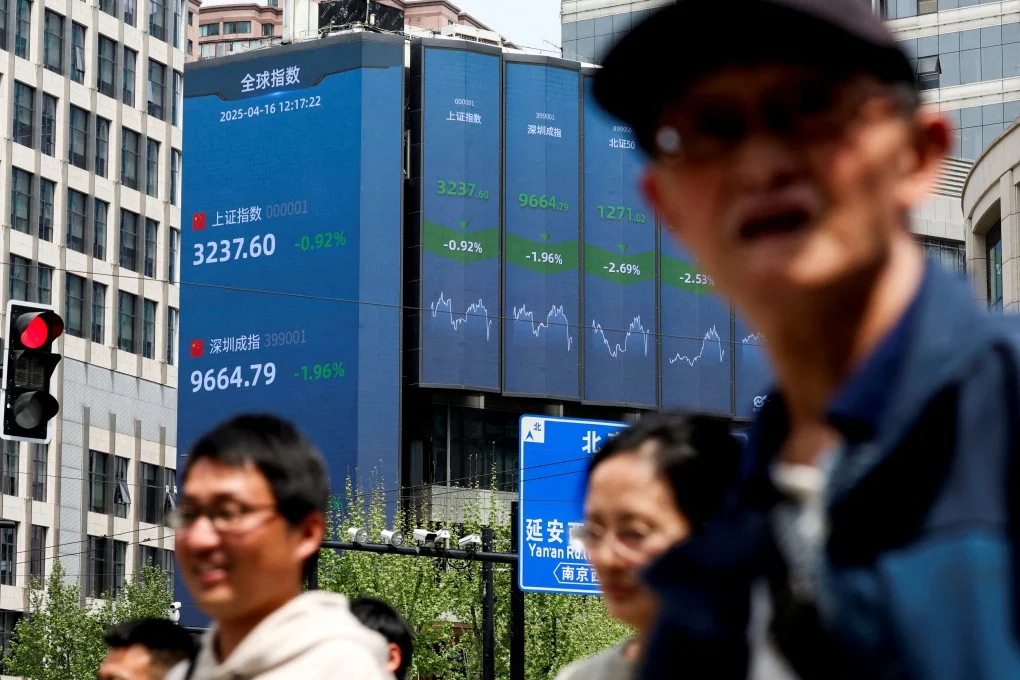China’s Market Rally Tests Depth, Not Just Direction

China’s equity markets have entered an unexpected rebound, drawing global attention as policy momentum, liquidity support, and investor sentiment converge. The Shanghai Composite Index (SHA:000001) closed near 3,670, up roughly 9 percent year-to-date, while the Shenzhen Component (SHE:399001) and ChiNext (SHE:399006) each gained over 1 percent on the week. The rally marks the benchmark’s highest level in nearly a decade, fueled by optimism around macro easing and industrial renewal under Beijing’s evolving policy framework.
The People’s Bank of China’s sequence of rate cuts, reserve-ratio reductions, and targeted liquidity injections has revived confidence in domestic credit markets. Northbound flows through the Hong Kong Stock Connect reached USD 4.8 billion in September, according to HKEX data—still 40 percent below 2021 peaks, yet signaling renewed foreign participation. The yuan (USD/CNY ≈ 7.27) has stabilized despite persistent dollar strength (DXY ≈ 105.7), and 10-year Chinese government bond yields (CGB10Y ≈ 2.25 percent) remain well below global peers, sustaining liquidity in onshore assets.
The macro backdrop remains nuanced. The IMF projects GDP growth around 4.4 percent for 2025, with industrial production slowing but retail consumption improving. Credit growth remains constrained by local-government financing-vehicle (LGFV) debt—estimated at USD 8 trillion, roughly 42 percent of GDP, based on IMF and BIS data. While Beijing has begun refinancing some of this exposure through municipal-bond swaps, the overhang continues to cap long-term market confidence.
Valuations, however, tell a different story. The MSCI China Index (NYSEARCA:MCHI) trades at 11.9× forward earnings, below the 12.4× emerging-market average, offering relative value for institutional investors rotating out of expensive U.S. and Japanese equities (INDEXSP:.INX ≈ 5,230; INDEXNIKKEI:NI225 ≈ 38,400). Yet the discount is driven less by underpricing than by skepticism—investors doubt that cyclical stimulus can offset structural drags from property, demographics, and export normalization.
Sector momentum is heavily concentrated. Technology, semiconductors, and renewable manufacturing have led the surge, reflecting Beijing’s “new-productivity” agenda ahead of the upcoming 15th Five-Year Plan (2026–2030 draft). AI-related equities and EV supply-chain leaders such as BYD (SHE:002594) and CATL (SZSE:300750) have rallied sharply, while property developers remain under strain. The CSI 300 Real Estate Index is still down over 30 percent from 2021 highs, underscoring that the policy floor has not yet become a foundation.
For global investors, China’s rally matters for three reasons. First, the market’s scale—over USD 9 trillion in capitalization—means any sustained recovery can re-shape EM portfolio weights and risk correlations. Second, China’s credit dynamics feed directly into global commodity and yield behavior; each 1-point rise in Chinese PMI historically lifts the Bloomberg Commodity Index (BCOM) by roughly 0.6 percent within a quarter. Third, stability in the yuan acts as a volatility anchor for Asian FX baskets, influencing regional policy stances from Seoul to Jakarta.
Still, skepticism persists. Foreign institutional participation remains less than 7 percent of A-share turnover, well below the 2021 peak. Capital-control rules continue to hinder rapid repatriation, and corporate earnings are uneven—industrial profits up 3.5 percent YTD, consumer discretionary still -4.2 percent. Inflation at 0.4 percent provides room for stimulus, but deflationary pressure lingers beneath headline stability.
Globally, investors are parsing whether China’s rally is a mirror of policy confidence or a mispricing of structural risk. With U.S. 10-year yields (US10Y:^TNX) near 4.35 percent and global liquidity tight, capital inflows into Chinese assets may remain selective—favoring low-beta, policy-aligned sectors over speculative growth.
For now, Beijing has bought stabilization, not transformation. Policy easing has restored liquidity and sentiment, but structural reforms—state-enterprise efficiency, household-income growth, and debt transparency—will determine whether this recovery endures beyond momentum. In the calculus of global markets, China’s rally is less about euphoria and more about repricing trust in the world’s second-largest economy.





